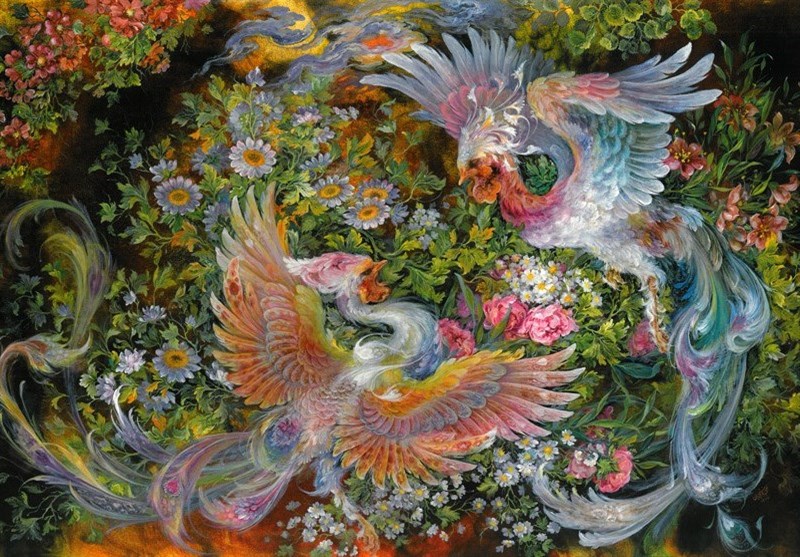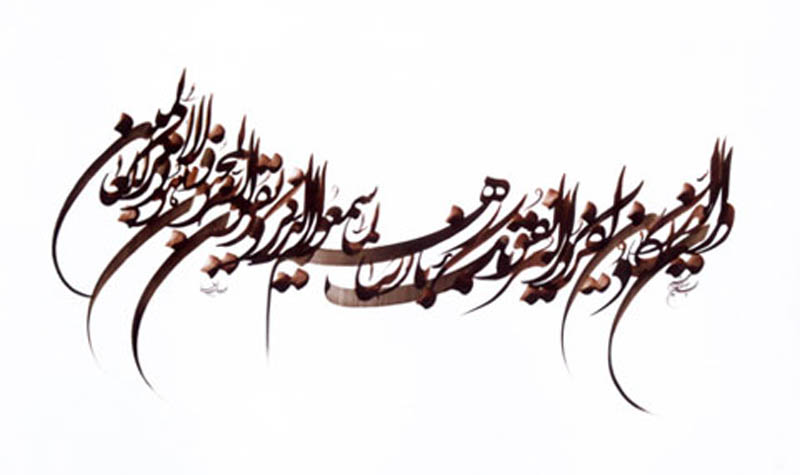Persian architecture stands as a testament to the brilliance and creativity of one of the world’s oldest and most influential civilizations. For centuries, Persian architects have crafted structures that blend functionality with beauty, using intricate designs, stunning artistry, and advanced engineering techniques. From the majestic mosques that dominate the skyline to the tranquil palatial gardens that offer a serene escape, Persian architecture embodies a harmonious fusion of art, nature, and culture. In this blog post, we’ll explore the grandeur and elegance of Persian mosques and palatial gardens, two iconic aspects of the country’s architectural legacy.
🕌 Majestic Mosques: The Heart of Persian Architecture
Mosques in Persia, both historical and contemporary, are more than just places of worship; they are expressions of the nation's rich artistic tradition and spiritual devotion. They represent the intricate relationship between architecture and religion, with each mosque designed to reflect the Islamic faith’s principles of balance, harmony, and light.
The Grandeur of Islamic Design
Persian mosques are often distinguished by their domes, minarets, and the use of geometric patterns that have come to define Islamic architecture. These elements combine to create awe-inspiring spaces that serve as symbols of divine beauty and spiritual connection.
-
Domes: Persian mosques are famous for their massive, grand domes that seem to touch the heavens. The dome often serves as the most striking feature, symbolizing the connection between the earth and the heavens. The dome of the Shah Mosque in Isfahan is an iconic example, with its intricate tilework and monumental scale.
-
Minarets: Towering minarets are a prominent feature of Persian mosques, designed not only to serve as a visual focal point but also as a means of calling the faithful to prayer. These tall, slender structures often stand as symbols of the mosque's presence in the city.
-
Tilework and Ornamentation: Persian mosques are renowned for their decorative tiles and intricate calligraphy. The tiles, often glazed in shades of blue, turquoise, and gold, feature geometric patterns, floral motifs, and Quranic verses. The Imam Mosque in Isfahan, for instance, showcases some of the finest tilework in the world, with its radiant blue tiles enveloping the entire structure.
-
Courtyards and Water Features: A defining characteristic of Persian mosques is their expansive courtyards, which typically feature serene water channels or fountains. These water features are symbolic of purity and tranquility, providing both aesthetic beauty and a sense of peacefulness in the otherwise busy urban environment.
🌸 Palatial Gardens: Where Nature Meets Architecture
Persian gardens are legendary, representing an idealized version of paradise on earth. These gardens were not merely places for relaxation but were also a reflection of Persian cultural ideals, where nature and architecture harmonize to create an environment of beauty, peace, and contemplation. Gardens have been a central feature of Persian palaces, and their design has influenced garden architecture across the world.
The Fourfold Paradise Garden (Chahar Bagh)
The concept of a paradise garden, or Chahar Bagh, is deeply rooted in Persian culture and is perhaps the most famous garden design in the world. This style of garden is laid out in a rectangular shape, divided by two intersecting axes that form four distinct sections. These sections often represent the four rivers of paradise described in the Quran: water, plants, perfume, and light. The design mimics the flowing rivers of paradise, with water channels running through the garden, enhancing the experience of tranquility and balance.
One of the most stunning examples of this design is found at the Shahzadeh Garden in Mahan, located in the Kerman province. Built in the 16th century, this garden is a beautiful representation of Persian architecture, with its symmetrical pathways, lush greenery, flowing fountains, and vibrant flowers.
The Influence of Islamic Principles
Much like Persian mosques, gardens also reflect key Islamic principles, particularly the concept of order, harmony, and divine beauty. Persian garden designs often feature pavilions or small structures at the center or at the intersections of the pathways. These structures provided a space for rulers and their families to enjoy the beauty of the garden in a private and serene setting.
The Fin Garden in Kashan, one of Iran's oldest and most famous gardens, exemplifies the Persian mastery of creating a microcosm of nature within an enclosed space. The garden combines a range of elements—elegant pavilions, swimming pools, and reflective water channels—to create an oasis of peace and harmony.
Symbolism in Persian Gardens
Persian gardens are a reflection of the ideal world—a space where nature, humanity, and the divine coexist in perfect harmony. The use of water in these gardens, particularly through channels and fountains, symbolizes life, while the cypress tree represents eternal life. Flowers, particularly roses and lotus flowers, are used for their symbolic meanings in Persian culture, representing beauty, love, and spiritual purity.
The design of the gardens also embodies a philosophical view of the world, emphasizing the balance between the natural and the human-made. Each element within the garden is carefully chosen to create a unified and harmonious environment where visitors can reflect, meditate, and reconnect with nature.
🏰 Iconic Examples of Persian Architecture
While the majestic mosques and palatial gardens are common across Iran, some stand out as the epitome of Persian architectural genius.
-
The Shah Mosque (Imam Mosque), Isfahan: Considered one of the most beautiful mosques in the world, this mosque is a perfect example of Safavid-era architecture. The blue-tiled dome, the intricate tilework, and the spacious courtyard create a sense of grandeur and tranquility. It is a masterpiece of Islamic architecture.
-
The Golestan Palace, Tehran: This UNESCO World Heritage Site is a stunning example of Qajar-era architecture. The palace is surrounded by breathtaking gardens that showcase the splendor of Persian garden design. The intricate mirror work, ceramics, and reflective pools in the palace make it a striking symbol of Persian artistry.
-
Chehel Sotoun Palace, Isfahan: Known as the “Palace of Forty Columns,” this structure is set in a beautiful garden and is renowned for its refined frescoes and reflective water pools. The palace stands as a perfect example of how Persian architecture merges beautifully with nature.
-
Shahzadeh Garden, Mahan: As mentioned earlier, this garden is one of the most famous examples of Persian garden design. Set against the backdrop of the desert, this garden is a reminder of the ingenious ways in which Persian architects used water to create lush, vibrant spaces in even the harshest environments.
🌍 A Global Legacy
The impact of Persian architecture extends far beyond Iran. The Mughal Empire in India, for example, adopted many principles of Persian garden design, resulting in iconic landmarks such as the Taj Mahal. Similarly, the influence of Persian mosques and palaces can be seen in Islamic architecture throughout the Middle East, Central Asia, and South Asia.
The beauty of Persian architecture—its combination of elegance, symbolism, and innovation—has had a lasting impact on world design. Today, Persian mosques and gardens continue to attract millions of visitors, offering them an experience of both spiritual reflection and aesthetic wonder.
🌟 Conclusion: The Timeless Beauty of Persian Architecture
Persian architecture is a celebration of beauty, balance, and harmony. The majestic mosques and palatial gardens stand as symbols of Iran’s rich cultural heritage, showcasing the incredible creativity and advanced techniques of Persian architects. Whether in the intricate tilework of a mosque or the serene tranquility of a garden, Persian architecture invites us to experience the world through a lens of grandeur, serenity, and symbolic meaning.
In a world where architecture often leans toward the modern, the timeless elegance of Persian mosques and gardens remains a reminder of the enduring beauty of tradition, offering us spaces to reflect, worship, and appreciate the divine artistry of human creation.





